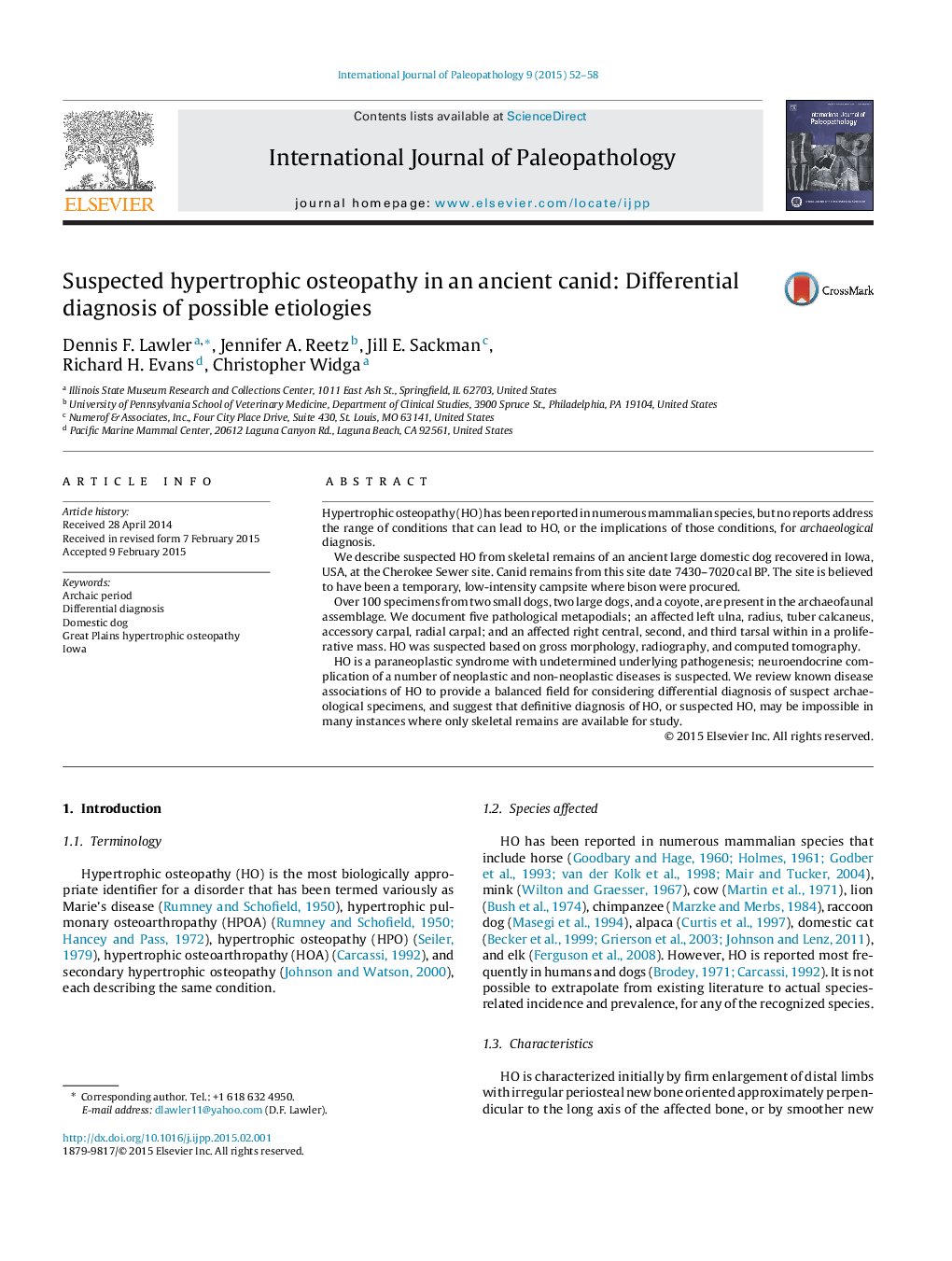| کد مقاله | کد نشریه | سال انتشار | مقاله انگلیسی | نسخه تمام متن |
|---|---|---|---|---|
| 101364 | 1422382 | 2015 | 7 صفحه PDF | دانلود رایگان |
Hypertrophic osteopathy (HO) has been reported in numerous mammalian species, but no reports address the range of conditions that can lead to HO, or the implications of those conditions, for archaeological diagnosis.We describe suspected HO from skeletal remains of an ancient large domestic dog recovered in Iowa, USA, at the Cherokee Sewer site. Canid remains from this site date 7430–7020 cal BP. The site is believed to have been a temporary, low-intensity campsite where bison were procured.Over 100 specimens from two small dogs, two large dogs, and a coyote, are present in the archaeofaunal assemblage. We document five pathological metapodials; an affected left ulna, radius, tuber calcaneus, accessory carpal, radial carpal; and an affected right central, second, and third tarsal within in a proliferative mass. HO was suspected based on gross morphology, radiography, and computed tomography.HO is a paraneoplastic syndrome with undetermined underlying pathogenesis; neuroendocrine complication of a number of neoplastic and non-neoplastic diseases is suspected. We review known disease associations of HO to provide a balanced field for considering differential diagnosis of suspect archaeological specimens, and suggest that definitive diagnosis of HO, or suspected HO, may be impossible in many instances where only skeletal remains are available for study.
Journal: International Journal of Paleopathology - Volume 9, June 2015, Pages 52–58
